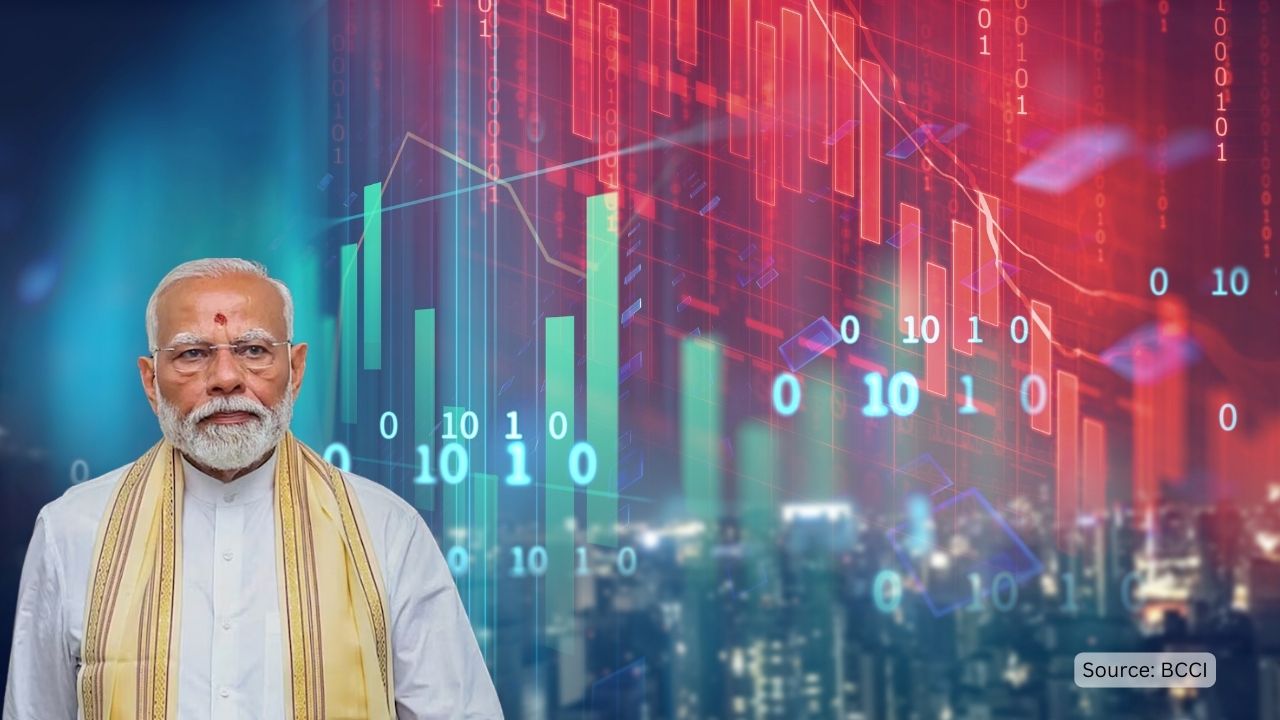The Bombay Stock Exchange Sensitive Index, or Sensex, is the most popular and extensively used stock market index in India. It is a barometer to assess the overall performance of the Indian stock market and reflects the country’s economic health and investor sentiment. The Bombay Stock Exchange (BSE), established in 1875, was Asia’s first stock exchange. In 1986, the BSE introduced the Sensex to provide a transparent and reliable measure of the stock market’s performance. Since then, it has become a crucial benchmark for investors, financial analysts, and policymakers.
Fig: 1
During Modi’s first term from 2014 to 2019, the Sensex experienced substantial growth. During this period, it rose by approximately 1.6 times. This time frame was marked by several key economic reforms, including the implementation of the Goods and Services Tax (GST) and the demonetization initiative in 2016. While demonetization aimed to curb black money and counterfeit currency, it also caused a significant market dip. Despite such challenges, the overall growth of the Sensex during this period reflects a positive investor sentiment towards the government’s economic policies and reformative measures.
Fig: 2
In contrast, the second term of Modi’s government, from 2019 to 2024, saw an even more impressive rise in the Sensex. During this period, it grew by 1.9 times. This period included the unprecedented economic shock of the COVID-19 pandemic. In early 2020, the Sensex was around 41,000 points but plummeted to approximately 26,000 points by the end of March 2020 due to the global market crash induced by the pandemic. Despite this major dip, the recovery was swift and robust. By the end of 2020, the Sensex significantly rebounded, and surged by an impressive 42%.
Two major dips were registered during Modi’s era: the first in 2016, post-demonetization, and the second in early 2020, at the onset of the COVID-19 pandemic. However, the resilience of the Indian stock market was evident in both instances. In 2016, the market initially reacted negatively to the demonetization policy, but the Sensex managed to recover as the economy adjusted to the new monetary environment. In 2020, the impact of the pandemic on the market was profound, with a rapid decline in early 2020. However, the subsequent recovery showcased the underlying strength of the Indian economy and the effective measures taken by the government to support businesses and restore investor confidence. Over the last three years leading up to 2024, the Sensex has shown continuous growth, with a notable increase of approximately 15% in 2024 alone.
Fig: 3
The comparison of the Sensex’s performance during Modi’s two terms illustrates a stronger growth trajectory in the second term despite significant global disruptions. This period highlights investor trust and confidence in the Indian stock market, driven by the government’s economic policies and reforms. The remarkable recovery post the COVID-19 dip and consistent growth in subsequent years underscore the resilience of the Indian economy and its attractiveness as an investment destination. As we move forward, maintaining this momentum and addressing emerging challenges will be crucial for sustaining investor confidence and market growth.
About Author
Pankaj Chowdhury is a former Research Assistant at the International Economic Association. He holds a Master’s degree in Demography & Biostatistics from the International Institute for Population Sciences and a Bachelor’s degree in Statistics from Visva-Bharati University. His primary research interests focus on exploring new dimensions of in computational social science and digital demography.
Disclaimer: The views expressed in this article are those of the author and do not necessarily reflect the views of 360 Analytika.
Acknowledgement: The author extends his gratitude to the Bombay Sensex for providing data support.
This article is posted by Sahil Shekh, Editor at 360 Analytika.

